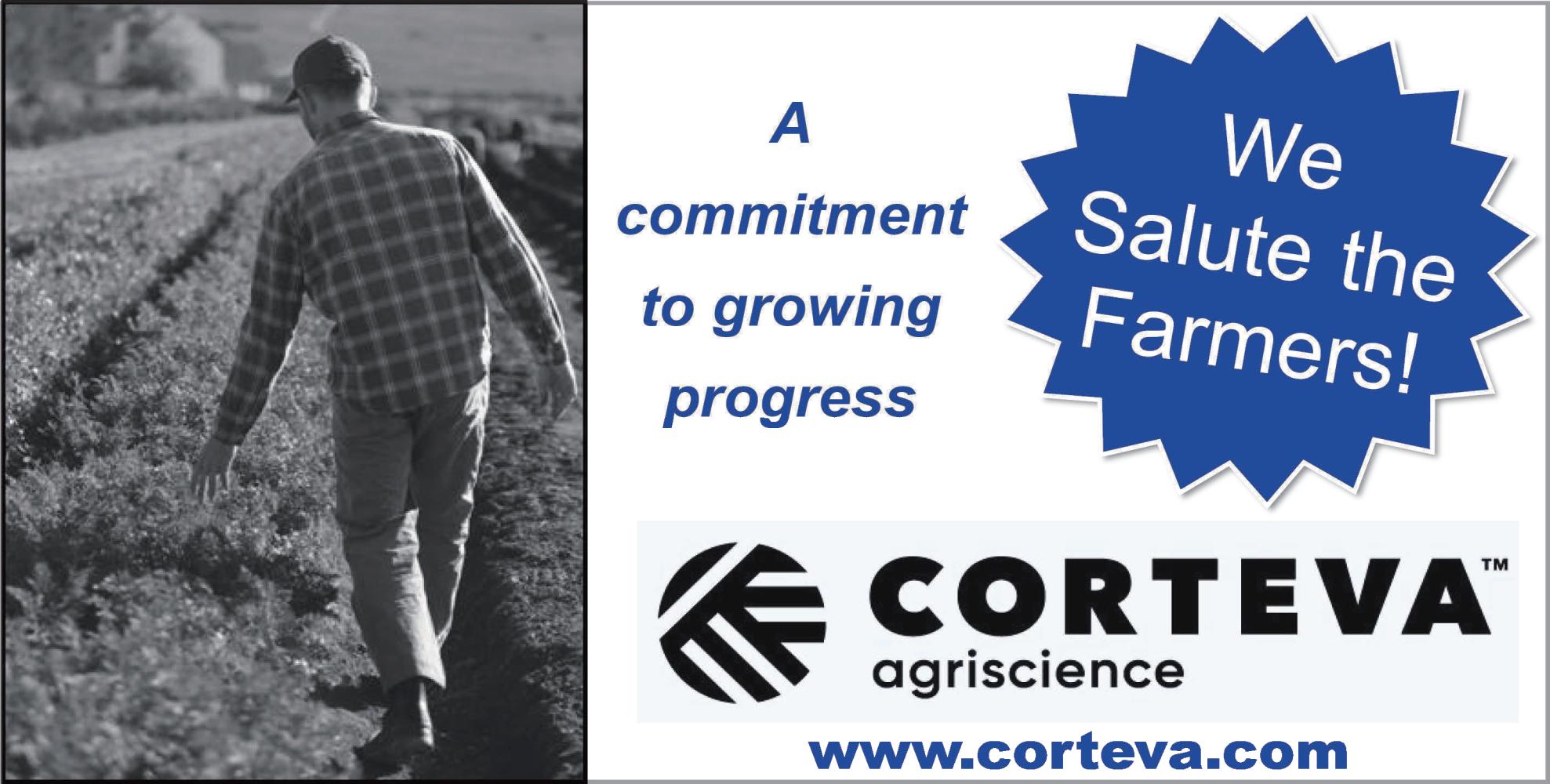






























The popularity of organic foods is undeniable. According to a 2021 survey from the Organic Trade Association, total sales of organic foods topped more than $60 billion in 2020
Data from Mercaris, which provides market insight and analysis on organics and non-GMO foods, supports that finding and indicates that organic food sales grew by 9 percent between 2009 and 2019. During that same time period, conventional food sales grew

only 3 percent, which illustrates just how popular organics have become over the last decade and a half. And despite being a year marked by a pandemic and the considerable economic uncertainty it unleashed, 2020 proved to be an especially good year for organics. Mercaris reports that organic food sales increased by 13 percent in 2020, which serves as another indicator that consumers are increasingly demanding organics over conventional foods.
According to a 2021 survey from the Organic Trade Association, total sales of organic foods topped more than $60 billion in 2020.

The agricultural workforce is shrinking, and has been for some time. The American Farm Bureau Federation estimates there are roughly 2.4 million farm jobs that need to be filled annually, but there has been a drastic decline in workers each year.

There are a number of reasons for the shortages. The AFBF says more than 73 percent of farm workers are immigrants from South America and Mexico. While the United States’ H2-A visa program, which allows employers who meet specific requirements to bring foreign laborers in for temporary work, has increased the number of accepted applications for immigrants to 250,000, this number is still just a drop in the bucket in terms of labor needs.

Another factor is a career in agriculture isn’t always easy or lucrative.
According to the U.S Department of Agriculture, for every dollar spent on food, a farmer receives only 7.6 cents. Farmers were predicted to lose 9.7 percent of total net income in 2021.

Declining interest in the field has also affected the number of farm workers. As more farm operators reach retirement age, fewer young farmers are replacing them due to volatile pricing, high real estate and land costs, steep initial machinery investment costs, and other factors. The physical demand of the industry also takes its toll. So what does this mean for the agricultural industry?
Many with knowledge of the industry indicate sweeping changes are warranted. Ellen Poeschi, the project director for the National Association of Agricultural Educators Teach Ag campaign, has said that a lack of agricultural education is contributing to the problem. Increasing availability of ag education courses across the country could build interest in the industry. Connecting students to internships or mentors may help, too.
Another option is to rally for greater economic opportunities in agriculture. The ag industry in general needs to find ways to make the

economic benefits more competitive to other industries, and improve the working conditions and job flexibility. Agricultural industries currently average only 60 percent of what other industries offer in salaries. Farm wages have been rising due to the H-2A program, which requires farm worker pay to be higher than the state/ federal minimum wage. More change is needed, but this may have to come at the federal level or be sparked by efforts on the part of agricultural advocacy groups.
Additional strategies farm operators can employ to combat shortages are: scaling back farm operations; integrating ag technology to reduce labor burdens; pivoting to crops that require fewer laborers; leasing portions of land to have extra money; employing temporary guest workers; and moving operations abroad.
Worker shortages continue to be problematic for the agricultural industry. A greater focus on remedying the issue is needed on a grand scale.
Cultivators are the most valuable citizens… they are tied to their country.
~ Thomas Jefferson ~
“
Plants often are only as strong as the soil in which they grow. While certain greenery may thrive no matter where it’s planted, soil conditions are often key to successful growing.
Sodic soil is one condition people may experience at home or in
commercial farming operations. Sodic soils, sometimes called saline-alkali soils or dispersive soils, are defined as having high levels of exchangeable sodium and low levels of total salts, according to the Colorado State University Extension. These conditions

all the
compromise growing conditions because sodic soils tend to be poorly drained and crust over. Water intake also can be poor in sodic soils, and pH is usually high — coming in above 9.0.
The Department of Primary Industries and Regional Development of the Government of Western Australia advises a simple sodic soil test to check for sodicity. One can collect dry soil aggregates (crumbs of soil) from different depths. Those crumbs should be placed into a clear jar of distilled water, taking care not to mix or agitate the soil. The water around the edges of sodic soil will become cloudy and appear milky. For highly dispersive soil, the dispersion will be evident after about 10 to 30 minutes. Moderately sodic soil may take 2 hours.
Individuals can take steps to improve sodic soil. Gypsum is the most commonly used amend-

ment for sodic soil, according to Science Direct. It also can reduce the harmful effects of high-sodium irrigation waters. Gypsum is a mineral that is composed of hydrated calcium sulfate. Gypsum has an effect on reducing the rate of soil erosion. It is more effective when gypsum is spread on the soil surface rather than mixed in.
Limestone, which also contains calcium, is another additive that can amend sodic soils. Gardeners may want to add calcium to the soil because it replaces the sodium and then the sodium can be leached out.
Additional mitigation methods for sodic soils include changing plant species or varieties to more tolerant ones that will grow more readily. Commercial farmers or home gardeners may encounter sodic soil. Though sodic soil is not ideal, it can be remedied in various ways.
Farmers have been pressured to increase production to meet the demand of a growing population. This may require employing more efficient measures to ensure maximum output. Unfortunately, efficiency doesn’t always mesh with sustainability, so commercial operations have had to make some modifications to find a balance between serving
the public and protecting the planet.
Green farming utilizes different technology and practices in order to decrease detrimental impact on the environment. According to the farming resource NuFarming, agricultural operations have a significant impact on climate change. Simply adopting some new practices can lessen that impact.
Growing plants are not the only thing on a farm that can benefit from the sun. Farmers can convert a portion or all of their power needs to solar. According to the U.S. Department of Energy, there are benefits when solar companies and farmers work together. Solar developers reduce installation costs and upfront risk by placing solar
modules on previously tilled agricultural land. Vegetation under modules also can contribute to lower soil temperatures and increased solar performance. Agricultural land managers can reduce energy costs and diversify their revenue streams with solar. Plus, they can market products to sustainability-minded customers. See GREEN
Green farming utilizes different technology and practices in order to decrease detrimental impact on the environment.
Solar is not the only renewable energy option. Farmers can incorporate wind and hydroelectric power as well.

This farming technique has been used for thousands of years and involves growing different crops in different seasons over a period of time. Farmers reduce the chances for pests and diseases becoming problems in the soil because frequent crop changes prevent invaders from gaining a foothold. Farmers use fewer fertilizers and pesticides as a result.
Farmers can improve productivity while also reducing environmental impact with these two growing methods. NuEnergy states that hydroponic systems grow
plants in mineral solutions or in materials like perlite or gravel. Aquaponics involves raising aquatic animals in addition to growing crops. The waste from the fish and other marine life is used to offer nutrients to the plants by growing them in this nutrient-rich water. Both methods remove the need for soil.

Drip irrigation methods deliver water to the roots of plants through a series of pipes or tubes. Because water is not being sprayed into the air through sprinklers and other methods, less is lost to evaporation, and less water overall may be needed to provide for crops.
Plastic seems like it may not have a purpose on the farm, but recycled plastic, which is used in
plastic mulch, can help produce plentiful crops with less water. Plastic mulches raise soil temperatures and insulate against evaporation so plants can grow faster and mature sooner. Invasive weeds also may be less likely to take root in plastic mulch or when crops are grown on black plastic.
Farmers can introduce plants that pests tend not to like to reduce reliance on chemical pesticides. For example, interspersing crops with natural bug repellants, such as basil, lavender and lemongrass, may keep insects at bay. Alliums, chrysanthemums, marigolds, and other flowers planted nearby also may deter bugs.


Green farming is something more agricultural operations may want to adopt.

The world faces many unique challenges in the decades to come, including a rapidly expanding global population. The United Nations estimates that the global population will reach 9.71 billion in 2050. That’s an increase of more than 1.7 billion people between 2023 and 2050.
Food security is among the more significant challenges the world will face as the population increases. The United States Agency for International Development notes that food secu-

rity means all individuals, regardless of their physical or economic circumstances, have access to sufficient food to meet the dietary needs for a productive, healthy life. Food security is a more significant issue than people may recognize, even in first world, fully developed countries. For example, the United States Department of Agriculture’s Economic Research Service indicates that slightly more than 10 percent of U.S. households were food insecure at some
point during 2021. In fact, estimates suggest more than 800 million people across the globe go to bed hungry every night, which underscores the seriousness of the issue.


Food security and the agricultural industry are inextricably linked. The USAID indicates that most of the people who go to bed hungry at night are smallholder farmers who depend on agriculture to make a living
and feed themselves and their families. Supporting efforts to strengthen the agricultural industry can help to combat food security, as the USAID reports that growth within that sector has been found to be at least twice as effective at reducing poverty as growth in other sectors. Much of that can be traced to the disproportionate percentage of poor people who live in rural rather than urban areas. For example, the USAID reports that 75 percent of poor people in developing
nations live in rural areas.
But the poverty rate is higher in rural areas than urban areas in the United States as well. Data from the 2019 American Community Survey indicates the poverty rate in rural areas was 15.4 percent in 2019 compared to 11.9 percent in urban areas. Though recent data regarding rural poverty rates in Canada is unavailable, a 2013 discussion paper on the topic from the Government of Canada noted that the country’s rural residents earned less

and had lower levels of education than residents in urban areas, suggesting that poverty is likely more prevalent in the Canadian countryside than in the country’s cities.
Though food security poses a significant global challenge, lack of access to healthy foods is preventable. Individuals in rural and urban communities can voice their support for efforts to strengthen the agricultural sector. A thriving agricultural sector can ensure fewer people go to bed hungry each night and bolster the economies of rural communities that are disproportionately affected by poverty.
Food security is among the more significant challenges the world will face as the population increases.
Farming has never been a vocation for individuals looking for easy work. Farmers typically work long hours, braving the elements regardless of how unpleasant the weather may be.

All that hard work ensures individuals who live in rural, urban and suburban communities have constant, readily available access to healthy foods. Such devotion merits support, and thankfully there are many things consumers can do to show their appreciation for local farmers.
• Buy fresh foods at your
local farmers market. Farmers markets are many foodies’ favorite places, but they aren’t exclusive to individuals with a passion for food. Everyone needs to eat, so why not eat foods grown locally, which are generally more fresh and appetizing than imported fruits and vegetables sold at chain grocery stores? Even individuals who don’t typically eat fresh fruit and vegetables can find something delectable at a local farmers market, where anything from homemade tomato sauces to locally raised fresh beef and
pork might be on sale.
• Order directly from local farms. Some farmers have embraced the e-commerce revolution and begun selling the foods they grow to consumers via their own websites. Research local farms and determine if it’s possible to buy directly from them. Farms may offer delivery or pick-up, and consumers can enjoy fresh foods even more knowing that they helped farmers earn higher profits by buying directly from them.
See CONSUMERS page 8


Grateful for our farmers for their continued support.
Climate change is a challenge the world must confront together. Though people from all walks of life and in all corners of the world will be affected by rising global temperatures and the ripple effects of such increases, the impact of climate change on the agricultural sector figures to be especially significant.
Farmers have been on the front lines in the fight against climate change for decades. When storms strike and climate patterns shift, farmers must find ways to adapt or potentially lose their livelihoods. Experts warn that the planet is warming at a pace that could prove devastating. For example, one assessment conducted under the World Climate Research Programme and published in 2020 in the Reviews of Geo-
physics concluded that the warming range of the planet will be between 2.6°C and 3.9°C. Everyone must do their part in an effort to avoid the more drastic outcomes associated with climate change. Farmers can explore these ways to combat climate change as they look to protect their personal and financial futures.
• Curtail methane emissions. The European Environment Agency notes that capturing methane from manure is one way for farmers to reduce agriculture-related greenhouse gas emissions. The California Climate & Agriculture Networks notes that more than half of the state’s agricultural emissions come from livestock in the form of methane. The nonprofit orga-

nization Foodwise reports that holistic, pasture-based livestock management utilizing practices like rotational grazing can help mitigate methane emissions from livestock.


• Emphasize efficient use of fertilizers. The EEA recommends efficient use of fertilizers as another means to reduce agricultural greenhouse gas emissions. The National Institute of Food and Agriculture at the U.S. Department of Agriculture notes that the greatest efficiency typically comes from the first increment of added fertilizer/ nutrients, with each additional increment thereafter resulting in lower efficiency. Making every effort to make the most of initial applications can save farmers money
Continued from page 7
• Check labels before buying in local grocery stores. Packaging labels will indicate where fruits and vegetables came from. When possible, choose items produced by local farmers. This may include fruits, vegetables, meat, pork, or even desserts like
pies. Locally produced foods often taste more fresh than items sent from overseas or distant farms, and consumers will feel better knowing they helped to support local farmers.
• Spread the word. Get the word out after a satisfying experience
and reduce the impact on the environment.
• Participate in and help promote local farmers markets. Foodwise notes that food in the United States travels an average of 1,500 miles before it ends up on consumers’ plates. Transporting foods that far contributes to more greenhouse gas emissions. Farmers who can sell to local farmers markets can help reduce such emissions. Promoting those efforts via social media pages or other public platforms can increase consumer awareness of the availability of fresh, locally grown foods.
The challenges posed by climate change are not going away. Farmers can take various steps to overcome those challenges.
with local farms and farmers. Whether it’s buying food from farms or taking advantage of family days that let kids enjoy a day on the farm, sharing positive experiences via social media or word-ofmouth can be a great way to inspire your neighbors to support
local farmers as well.
Consumers can do much to support hardworking local farmers. In addition to feeling good about supporting their rural neighbors, consumers also might feel good when they sit down and enjoy a meal featuring locally grown, fresh foods.
Climate change poses a threat to various industries, not the least of which is the agricultural sector. Agricultural industry insiders recognize that the changing climate has been forcing farmers and agricultural organizations to adapt and adjust for decades, and that need to be flexible won’t change in the years to come.

One of the changes many farmers may consider in coming years, if they haven’t already, is a pivot to regenerative agriculture practices. Regenerative agriculture could have a profound impact on the world over the next half century, so now may be a great time to gain an understand-
ing of the practice.
What is regenerative agriculture?
Regenerative agriculture is a production system that focuses on reducing water usage and other inputs as part of a larger attempt to prevent land degradation and deforestation.
According to the organization Green America®, regenerative agriculture is designed to harness the power of photosynthesis in plants to sequester carbon in the soil. The ability to do that can improve soil health, crop yields, water resilience, and nutrient density.

Why should

people be interested in regenerative agriculture?
GreenAmerica® notes that regenerative agriculture draws down atmospheric carbon dioxide. That’s a significant benefit, as Climate. gov, which is a product of various departments within the National Ocean and Atmospheric Administration, reports that adding more carbon dioxide to the environment is causing global temperatures to rise. In fact, observations from the NOAA Global Monitoring Lab in 2021 revealed that carbon dioxide alone was responsible for about
See BASICS page 11

Much has been made of the rising global population and the effects that the increase will have on the planet. Though estimates regarding the global population by 2050 vary considerably, the World Resources Institute notes that finding ways to sustainably feed what could be an additional two to three billion people pose a number of challenges for the agricultural sector. One such challenge is meeting those demands while lowering emissions. The WRI notes that shifting to healthier, more sustainable diets could be part of the solution to that problem.
According to the WRI,
consumption of beef, lamb and goat is projected to rise by 88 percent between 2010 and 2050. Beef is the most commonly consumed ruminant meat, and that could pose a problem as the global population expands rapidly between now and 2050. That’s because beef is the most resource-intensive ruminant meat to produce. Beef requires 20 times more land and emits 20 times as many greenhouse gases per gram or edible protein compared to plant proteins like lentils, beans and peas. Shifting to diets relying on plant-based proteins, including lentils, beans and peas, could help


to dramatically reduce greenhouse gas emissions and reduce the need for more agricultural land.
The WRI asserts that preventing the expansion of agricultural land could help save more lands for forests, which can play an important role in combatting climate change as the 21st century progresses.
A widespread shift to a plant-based diet is unlikely to happen overnight, but there are steps the agricultural sector and governments working
in partnership can take to promote such a shift.
The WRI recommends actions to improve the marketing of plant-based foods and efforts to improve meat substitutes, which are already readily available at many grocery stores. Policies that favor consumption of plantbased foods is another step governments can take as they work toward creating a sustainable food future for a global population that figures to expand considerably between 2023 and 2050.

The WRI notes that shifting to healthier, more sustainable diets could be part of the solution to climate change.
The demand for food is directly related to population growth. By 2050, food needs are expected to double, according to a study published in the journal Agricultural Economics. That puts increasing pressure on the agricultural sector to meet growing demand. However, many experts think the industry will fall short.
In addition to increased food demand, consumer habits, technology, and policies continue to force the agricultural industry to evolve. Indeed, the agricultural sector may look very different in the future.
Social media has transformed many industries, and it can do the same for agriculture. Farming supply chains can communicate with one another by getting feedback from customers in real time through social media. However, agricultural operations will have to devote teams to manage social media presence, especially since misinformation is so widespread on social media.


Apart from social media, local farmers may increase their efforts to utilize mobile apps and
direct-to-consumer purchasing options. The global pandemic helped businesses reimagine takeout and curbside shopping. Local farms may want to market to the home-shopping community, providing ways to deliver produce, fresh meat and poultry and other items direct to customers’ homes.

The future may feature a significant shift in the way farms source their ingredients. Regeneration International says that regenerative agri-
culture can be the future. This describes farming and grazing practices that may help reverse climate change by rebuilding soil organic matter and restoring degraded soil biodiversity. Some insist that farmers who utilize regenerative agriculture produce food that is more sustainable and healthy. This is something ecoand health-conscious consumers can stand behind.
There’s a good chance that technology will con-
tinue to play important and growing roles in farming operations. New agricultural technologies can collect data on soil and plant health and produce results in real time. Precision farming technology can be developed to deliver integrated solutions no matter the size of the operation.
Shift in what’s grown Farmers may give more thought to sustainable products. Crops like hemp and cannabis are being utilized in new and innovative ways, and they’re only the start as consumers have expanded their views on plant-
two-thirds of the total heating influence of all human-produced greenhouse gases. GreenAmerica® reports that, at scale, regenerative agriculture could help to reverse the climate crisis by drawing down atmospheric carbon dioxide.
Another reason to consider regenerative agriculture is its connection to topsoil. GreenAmerica® reports that the world is on the cusp of running out of topsoil, which is vital to growing food. Regenerative agriculture rebuilds topsoil, which can lead to greater food security across the globe.
What are some regenerative agriculture practices?
Regenerative agriculture practices include the usage of cover crops, a reduction in tilling, crop rotation, and spreading compost. GreenAmerica® notes that regenerative agriculture practitioners also avoid the use of synthetic fertilizers, pesticides, herbicides, and factory farming.
As the climate crisis continues to challenge the agricultural sector, regenerative agriculture could help farmers and the larger industry successfully confront those issues.







